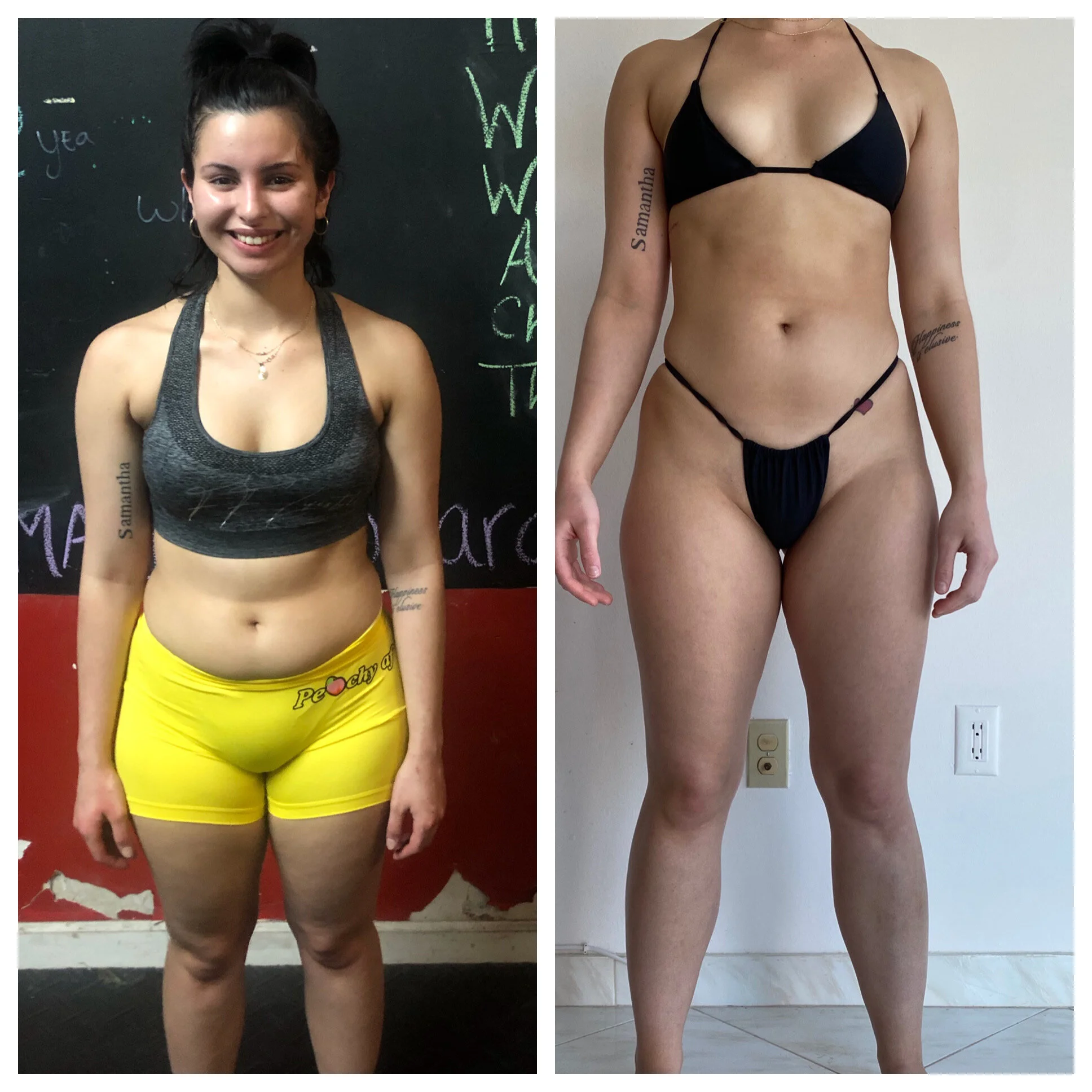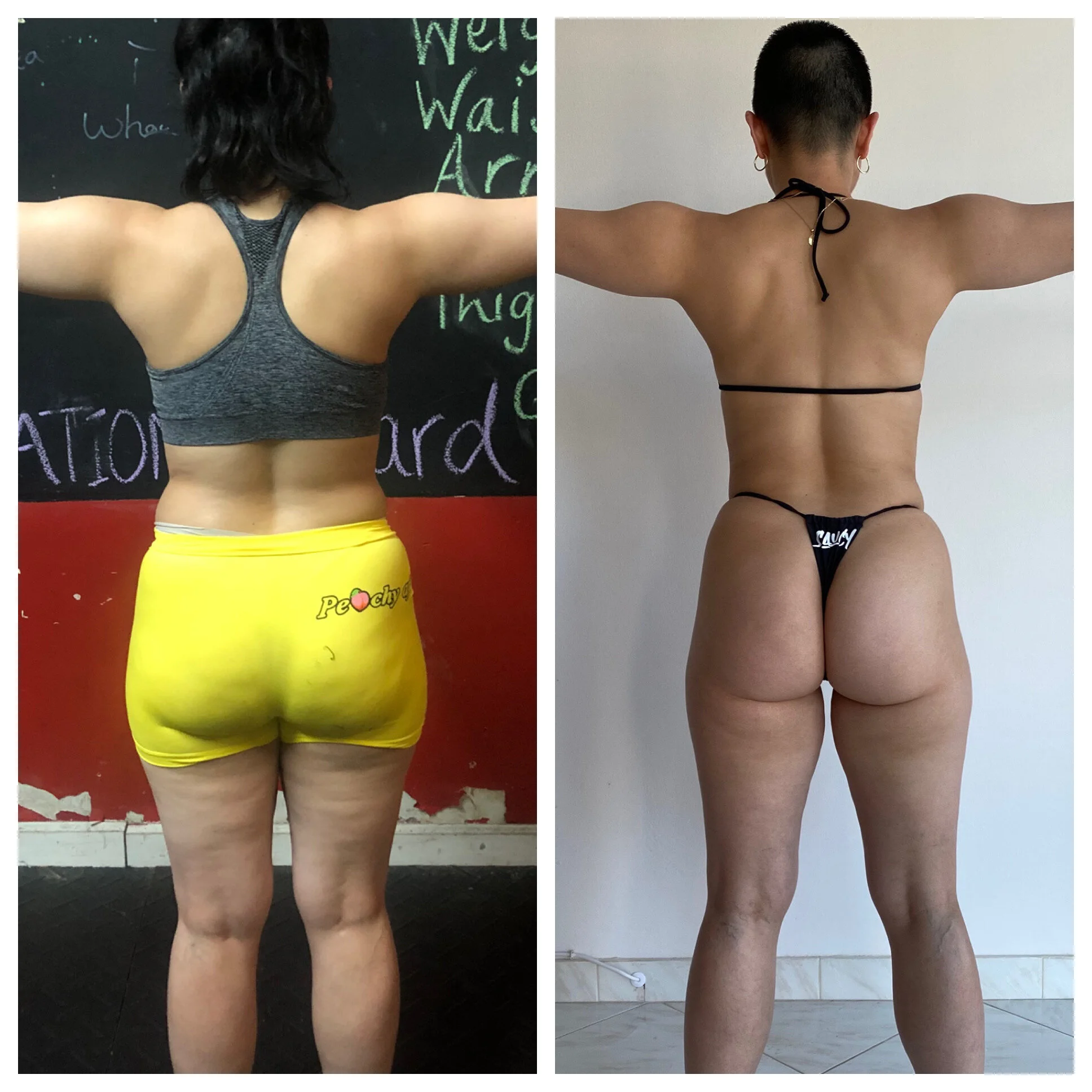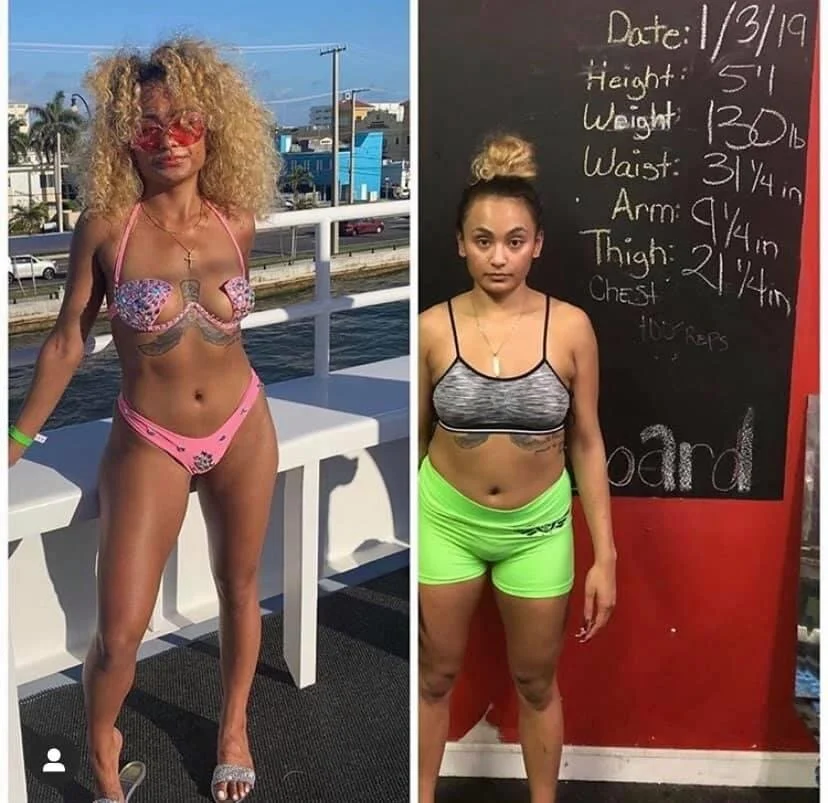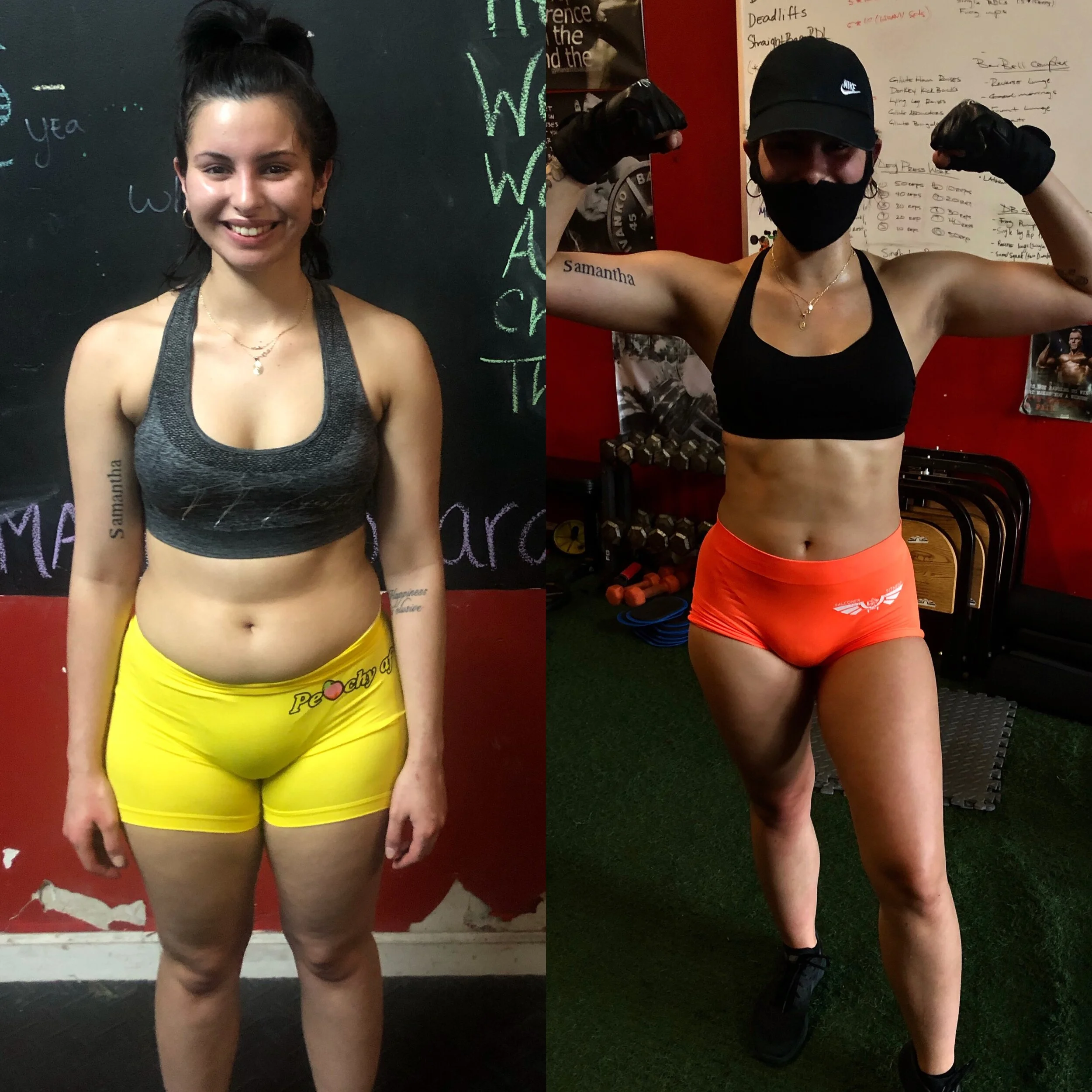TRANSFORMATION
STATION
Track Your Weight Loss Progress
$35 for 4 Weeks
Have you ever spent several weeks exercising and watching your diet, only to watch the scale stay at the exact same number day after day? We all have and there's a very good reason for that. The scale doesn't tell the whole story.
In fact, if you're working out, your body is changing. Your heart is learning to work more efficiently, your circulation is getting better, and boosting your metabolism.
All of these changes are necessary for weight loss to happen, but it's hard to get excited about changes that we can't see and feel. So, if the changes are happening and you can't measure them, and the scale isn't moving how do you know if you're making progress?
Maybe it's time to find a new way to track your progress.
Welcome to the Transformation Board Weekly Inches Tracking
Check-Ins are twice weekly: Beginning of the week after the weekend (Monday) and the end of week (Friday) 5 days. Weekly tracking and weekend tracking are documented!
Friday, Saturday, and Sunday are the hardest day to stay on track so reporting to the transformation board after the weekend is very important! 2 days Tracking
$35 for 4 weeks
Take Your Body Measurements
This is a great option for tracking progress because it doesn't require any fancy equipment and anyone can do it. Taking measurements of certain areas can give you an idea of where you're losing fat, which is important since we all lose fat in different areas and in a different order.
Taking your measurements will help reassure you that things are happening—even if you're not losing fat exactly where you want just yet.
Start by wearing tight-fitting clothing (the less the better) and make a note of what you're wearing so you know to wear the same clothes the next time you measure. body parts measured, Here's how we do it:
Bust: around the chest right at the nipple line.
Calves: largest part of each calf.
Chest: just under your bust.
Forearm: around the largest part of the arm below the elbow.
Hips: tape measure is placed around the biggest part of your hips.
Thighs: around the biggest part of each thigh.
Upper arm: around the largest part of each arm above the elbow.
Waist: a half-inch above your belly button or at the smallest part of your waist.
we use an photo library to record your measurements. Take them again once a week or once a month to see if you're losing inches.
Knowing your body composition in inches can give you a better idea of how much fat you really need to lose and, even better, whether you're making progress in your program, things your scale can't tell you. It's possible for your scale weight to remain the same, even as you slim down, especially if you're losing fat and gaining muscle. What we use for Tracking is the black board, a measuring tape, a scale, and photos for the visual aspect of change!
Get the most out of the Transformation Board by:
Checking in once a week or every other week. Body composition doesn't change overnight and you may not see those small changes if you measure every day.
Having the same person measure you each time. Different people will measure body change in different ways, here you will stick with the same method and person each time.
Keeping track of your numbers in a Picture Diary. Accountability is key.
Measuring under consistent circumstances. Be sure to measure under the same conditions each time.
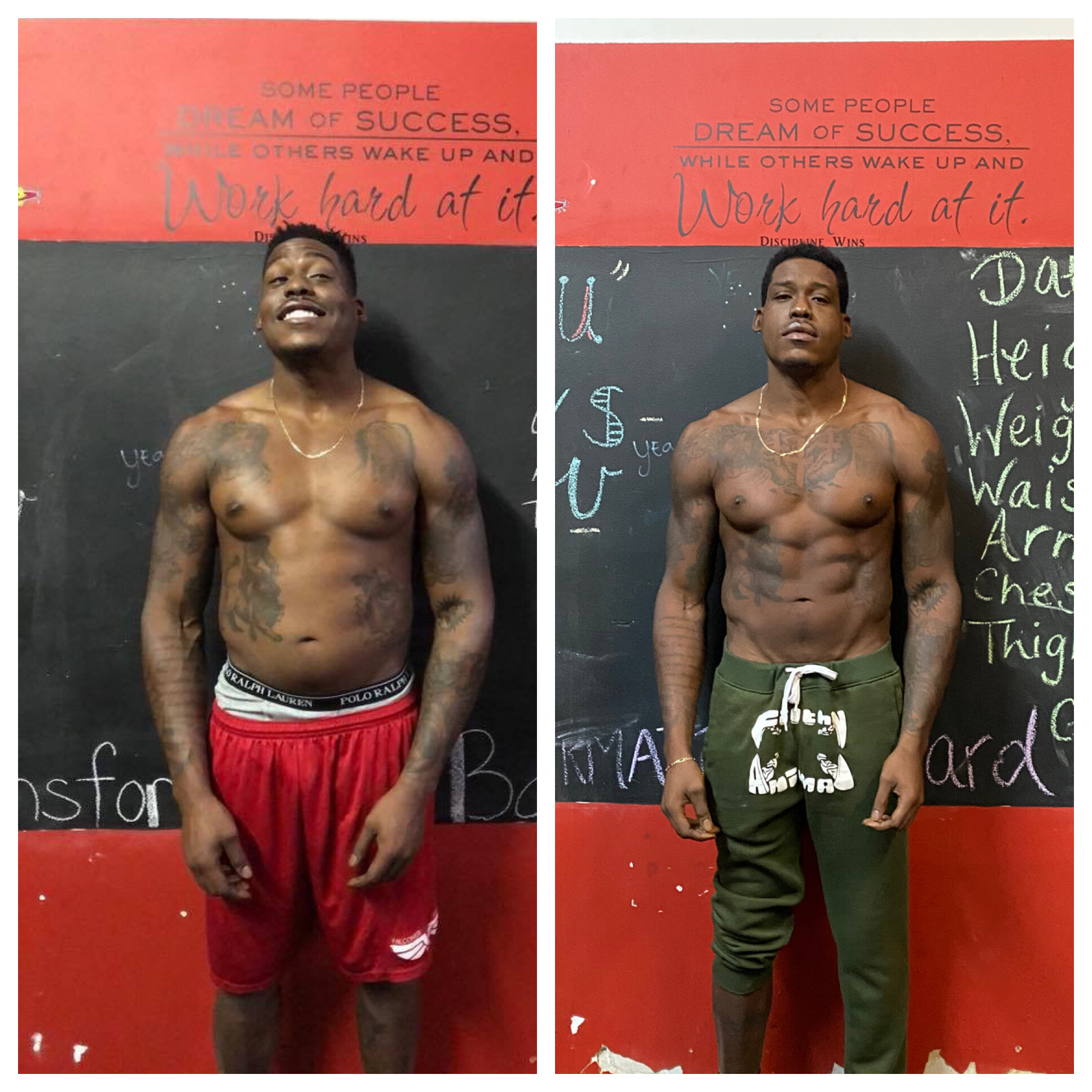
GAME OF INCHES
The Problem With only using Scales
Scales don't always give you the whole story about your body or your weight loss progress. For that reason, scales (when used alone) aren't the best way to track what's really going on inside your body.
Another reason not to use the scale by itself is because of the emotional nature of weighing ourselves. Stepping on a scale doesn't just give us a number, it can determine how we feel about ourselves and affect body image.
The problem with bodyweight scales is that they measure everything — fat, muscle, bones, organs, and even that sip of water or bite of food you've had. The scale can't tell you what you've lost or gained, which is important information if you're trying to lose weight—and by weight, what we really mean is fat.
Why Your Weight Fluctuates
The numbers you see on the scale vary with these factors:
Food weight gain: Weighing yourself after a meal isn't the best idea simply because food adds weight. When you eat it, your body will add that weight as well. It doesn't mean you've gained weight, it simply means that you've added something to your body (something that will be eliminated through digestion over the next several hours).
Muscle gain: Muscle is more dense than fat and it takes up less space, so adding muscle could increase your scale weight, even though you're slimming down.4
Water weight gain: Because the body is about 60% water, fluctuations in your hydration levels can change the number on a scale. If you're dehydrated or have eaten too much salt, your body may actually retain water, which can cause scale weight to creep up. Similarly, many women retain water during menstrual cycles, which is another thing that can make that number change.
That doesn't mean the scale is useless. In fact, it's a wonderful tool when you combine it with the transformation board. Knowing both of these numbers will tell you whether you're losing the right kind of weight: fat.
“It's been a month and I've been doing everything, but my weight hasn't budged. My pants are fitting looser, so I know I'm doing something right, but why won't my weight go down?"
Have you ever been in this situation? You've been doing all those things that should lead to weight-loss, but the number on the scale doesn't budge. Even though you're seeing other signs of improvement, it can be demotivating to weigh the exact same as you did when you started.
Make it stand out.
Dream it.
Just think about professional fighters who cut 10-20 pounds before a fight by dangerously dehydrating themselves. This is just one example of non-fat weight-loss, and you don't want any part of this!
The same can be said for hormonal shifts that cause weight-gain or weight-loss, sodium intake, and even the type of exercise you've recently done. The scale doesn't know any of this, and therefore, can't give you an accurate reading of the real goal at hand: fat-loss.
Build it.
Losing inches, but not weight indicates that your body is changing in composition. This is huge progress and will lead to even greater progress in the future because of the positive change your metabolism is undergoing.
The scale can't differentiate between fat weight and lean mass weight, so, as an example, on a day when you hydrate really well—something that will actually help you shed fat long-term—your scale weight might not look so hot.
Lose it.
Losing inches, but not weight indicates that your body is changing in composition. This is huge progress and will lead to even greater progress in the future because of the positive change your metabolism is undergoing.
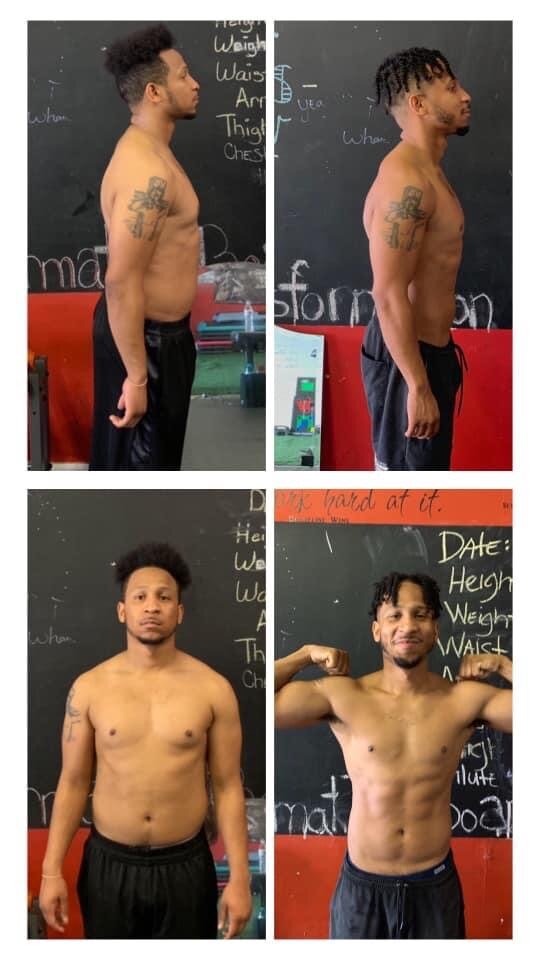



Focus on Fat Loss, Not Weight
Still, the scale may not be the best tool for people just starting a fat loss program. If it doesn't help you stay on track and reach your goals, maybe it's time to take a different approach to track your progress.
Focusing on fat loss is much more important than focusing on your weight. When you lose body fat, you're making permanent changes in your body, shifting your body composition so that you have less fat and more muscle. When you lose weight, you could be losing water or even muscle. It's impossible to know if you're seeing real results or just the product of your daily habits, hormonal shifts, and changing hydration levels.
Here's how the scale may mislead you.
It measures everything. The number on the scale includes muscles, fat, bones, organs, food, and water. For that reason, your scale weight can be a deceptive number.
It doesn't reflect the changes happening in your body. If you're doing cardio and strength training, you may build lean muscle tissue at the same time you're losing fat. In that case, the scale may not change even though you're getting leaner and slimmer.
It doesn't reflect your health. The scale can't tell the difference between fat and muscle. That means a person can have a low body weight but still have unhealthy levels of body fat.
It isn't always a positive motivator. If you step on the scale and you're unhappy with what you see, how does that make you feel? You may question everything you're doing, wondering why you even bother at all. Focusing on weight may overshadow the positive results you're getting, such as fat loss, more endurance, and higher energy levels.
Measure Success in a New Way
When you first start a weight-loss program, you may need extra encouragement to keep going, and proof that what you're doing is working. The scale may not give you that. Using other ways to measure progress can keep you motivated and help you realize that you are making changes, no matter what the scale says.
Remember that your body loses weight based on your gender, age, genetics, and other factors beyond your control. Just because you aren't losing weight in your hips doesn't mean you're not losing weight somewhere. It may just be from a place you don't much care about.
Consider other methods to measure success, beyond the scale.
Notice how your clothes fit. If they fit more loosely, you know you're on the right track. It helps to have one pair of pants that are a little too tight. Try them on once a month and make notes on how they fit. Clothes don't lie.
Take your measurements to see if you're losing inches. Measuring your body at different points helps you figure out if you are, in fact, losing fat. Knowing that may motivate you to keep going and allow your body to respond to your workouts.
Set performance goals. Instead of worrying about weight loss or fat loss, focus on completing a certain number of workouts each week or competing in a race. See how many push-ups you can do or how many days in a row you can exercise. These are tangible, reachable goals that give you more of that instant gratification the scale doesn't.



